Changes from a Mouse
Armodoxy for Today: Change
This Summer Disney is asking, “What if a Mouse Could Change the World”? Alluding to the little black and white cartoon character that debuted almost a century ago, the multibillion dollar company is using the mouse to point to their resorts, theme parks, songs, movies, and everything that is part of magic of Disney. It is interesting that the ad campaign does not refer to the mouse by name. The Disney mouse is so well known that there is no mistaking him with any of the other pop mouses, whether his girlfriend Mini, or Jerry of Tom and Jerry, or Mighty Mouse. Mickey is so well branded that thousands of children line up at Disney theme parks every day to get their mouse-ears. The shape of the cap is enough to make the connection. Yes, indeed, the little mouse could and has changed the world.
There is another mouse that we adopted about 40 years ago. It too has changed the world, primarily in the way we interact with the world. It is the electronic device that resembled more of a mouse when it had a wire connecting it to the computer, but even today in its tailless/wireless evolved form, allows us to change our world with words, graphics and videos in a manner that was incomprehensible only a 50 years ago.
In both cases – Disney’s Mickey and the computer’s pointing device – change has been embraced. The question, What if a mouse could change our world? is rhetorical. Of course, the mouse has changed our world, just as so many other things have changed our world.
In a few days we will remember a time when the terrifying power of the atomic bomb was unleashed on human populations in Hiroshima and Nagasaki. It brought an end to the Second World War, but it also instilled in our collective memory the scene of mass destruction. We saw an entire city destroyed in the blink of an eye. We saw beyond that blink, at the years and decades of disease and psychological trauma, the fear and anxiety with which subsequent generations lived, with take-cover drills and the Friday-morning bomb drills. Today, nuclear arsenals can destroy not only cities but the world and civilization itself. They are so destructive that there is no preparing for them. We have abandoned the drills and perhaps even some hope.
Change is inevitable. Change is happening. If we live, we change. When we die, we decay. A mouse brought change a century ago. A bomb brought change in a more existential manner.
The Armenian experience has been one of constant change. Living under different regimes, being invaded by barbarians and having to leave house and home, has left its scars on the people and the collective psyche. The Armenian church, with its centralized theology on the person of Jesus Christ, has offered the stability in stark reaction and in contrast to the changes that drive anxiety and fear. Ironically, Jesus Christ brought about a revolution, a change in the way we understand ourselves in relationship to God. The cornerstones of that revolution are faith, hope and love. These are the three elements of stability that counter act the anxiety of change in our lives.
Jesus Christ is the change that brings change toward peace and harmony. The centerpiece of the Armenian Church, and therefore Armenian Orthodoxy, is peace and harmony.
Let us pray, O Lord of hosts, commit my soul to the angel of peace, who will come and keep us tranquil by day and by night, while awake and resting. Increase in me faith, hope and love, so that I may walk with courage and strength as I journey through this life. And at all times I give thanks and glory to you. Amen.


